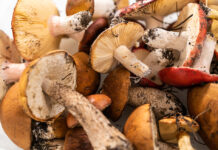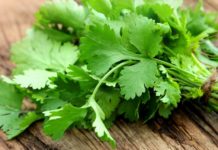
How to improve your nutrition this season
By Lisa Cantkier, Holistic Nutritionist
With spring in the air, there is a feeling of fresh, new beginnings. When it comes to food, consider trying something new and consider eating clean more often—try organic, non-GMO, whole food ingredients that do not come packaged in a box or container with additives, preservatives or chemicals. Spring is the perfect time to enjoy in-season produce, herbs and spices, fresh from your local farmer’s market. You can also experiment with planting your own herb and vegetable garden.
Here are some of my favourite ways to enjoy what the new season has to offer.
1
Choose local and in-season fruits and vegetables
When we choose to buy local and in-season foods, we eat healthier. Less travel time from harvest to plate means less nutrients lost in our food. We also lower the carbon footprint and help the environment as a result. We support local farmers who are all important to their communities. In Ontario, the following foods are in-season in April: apples, beets, cabbage, carrots, cucumber, lettuce, mushrooms, onions, parsnips, peppers, potatoes, rutabaga, rhubarb, sprouts, sweet potatoes and tomatoes.
2
Eat more veggies
Be adventurous. Vegetables—particularly organic and green ones—offer an array of nutritional benefits, including fibre, vitamins, minerals and antioxidants. Non-starchy vegetables are low glycemic and can help keep your blood sugar in check. It’s cliché but true—you won’t know until you try. Consider kale, sea vegetables, mushrooms and cruciferous vegetables such as broccoli and cauliflower for their superfood benefits. Which ones will you steam, sauté, bake or roast?
3
Reach for raw
Eating more veggies is good, and eating them raw can be even better. Eat more raw, nutrient-rich vegetables—especially cruciferous ones—and fruit in a wide range of colours to receive the benefits of an assortment of vitamins. Try juicing to get more veggies conveniently and easily into your diet.
4
Bite into beautiful berries
Spring is a great season to eat more berries. They are a rich source of fibre and antioxidants. Sprinkle berries on your cereal, yogurt and salad. Berries are also nature’s candy.
5
Pitch packaged foods
Avoid products that contain ingredient names that look unfamiliar to you. Unfamiliar ingredients usually equate with unhealthy additives, preservatives and chemicals. Instead, select local, in season, whole foods.
6
Get rid of refined foods
Spring clean your gut by eliminating refined foods such as white rice and white flour that are nutrient-stripped and high glycemic. Make your own gluten-free flours by grinding mineral-rich seeds such as sunflower or pumpkin seeds. Consider sprouted seeds which can offer over 100 percent more vitamins and antioxidants. Bake homemade pizza and lasagna with an eggplant base. Replace nutrient poor rice with nutrient-dense quinoa. Make a wrap with seaweed or collard greens.
7
Go organic when you can
When you choose foods that are organic, you are not only helping the eco-system in many ways, you are also helping your gut in more ways than you’d think. Organic foods are clean and free from harmful chemicals, pesticides, genetically modified processes, antibiotics and anything that is unnatural—from start to finished product. They are higher in minerals and are free of GMOs. I find organic foods taste better, too.
8
Say goodbye to sugar
This is one of the healthiest detoxifications you can offer your body. Use natural sweeteners lower on the glycemic index, such as Stevia to replace refined sugar that has been stripped of its minerals. Although maple syrup and honey are not considered low glycemic, they certainly have more minerals and health benefits than white, refined table sugar. Consider dates to sweeten your recipes.











